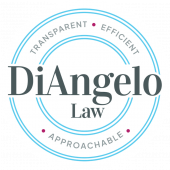Should I hire a lawyer for my trademark?
Yes, and here’s why….
Unlike registering a Limited Liability Corporation (LLC) or other business entity, a federal trademark registration is an actual piece of property and is subject to a rigorous approval process in order to be created. It isn’t just about filling out an application and allowing the United States Patent and Trademark Office (USPTO) to process it.
Here’s how it works in a nutshell:
Start by choosing your mark. If you are in need of inspiration, check out the naming guide. Once you have it narrowed down to your top choice, you’ll need to clear the mark for “availability.” This means getting a clearance search done and analyzed by a trademark expert for registrability and infringement. Finding available marks is more difficult than ever with the 73% surge in trademark applications, rise in online businesses, and the 10-year renewal gaps. Even if you find no exact matches, that does not ensure your chosen mark is protectable.
Once you’ve decided on your trademark that you wish to apply for, you’ll need to decide if you meet the criteria for “in-use-in-commerce” or not. This decision governs the status you choose on your initial application. An incorrect selection here may create an unfixable application.
Next, you’ll need to decide the appropriate international class(es) and draft a description of your products and services. Keep in mind, each class comes with its own set of filing fees, so balancing the interest of brand protection and saving on fees is a delicate process. Experienced trademark attorneys often have strategies for doing this effectively. Choosing an incorrect class or inaccurate description is also another major pitfall that can cause your trademark registration application to be unfixable.
After you’ve gotten those two steps nailed down, it’s time for the actual application. Here is where you fill out all the information, including identifying the actual trademark you’re seeking protection for. People filing their own applications or using a third party like LegalZoom without a lawyer, often run into trouble here because they’re unsure if they’re applying for their brand name or logo or both. Sometimes the way they submit the application doesn’t accomplish their goals, for example, including variations that they only sometimes use, or failing to meet the criteria for Amazon Brand registry trademarks.
After you submit the application and the appropriate filing fees, you will wait about four to six months to hear back from the USPTO. Current wait times are close to six months as of the publication of this blog. If you encounter an “Office Action” this is essentially a preliminary refusal, which is very common and may or may not be fixable depending on the issues you encounter. This is a common point where DIYers end up hiring an attorney and paying more money for legal advice or starting the trademark registration process over.
Sometimes applicants are successful in getting registration on their own and that is great! But sometimes, even with registration there are flaws that we don’t know about until it’s too late. If the date of first use in commerce was incorrect in the statement of use, for instance, the trademark registration could actually be challenged for “fraud” and even be invalid. Other times the registration just doesn’t actually protect the products or services intended to be protected by the owner.
After registration, trademark owners have a duty to enforce their trademarks. While it is not required, an attorney watch service will help discover potential infringers and take appropriate measures to prevent further infringement.
Speaking with an attorney will help identify unique strategies that best serve your brand, avoid pitfalls, and plan and prepare for growth.
If you still aren’t sure why trademark registration is important for your brand, read here about the benefits or schedule a call with us.



